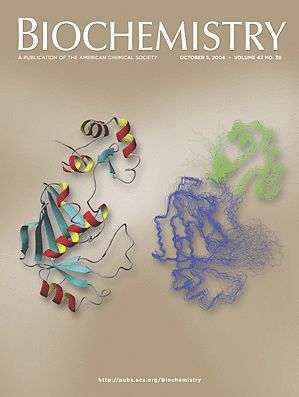Mouse NEIL1 protein is specific for excision of 2,6-diamino-4-hydroxy-5-formamidopyrimidine and 4,6-diamino-5-formamidopyrimidine from oxidatively damaged DNA.
A functional homologue of human DNA glycosylase NEIL1 (hNEIL1) in mouse has recently been cloned, isolated, characterized, and named mouse NEIL1 (mNEIL1). This enzyme exhibited specificity for excision of oxidatively modified pyrimidine bases such as thymine glycol, 5,6-dihydrouracil, and 5-hydroxypyrimidines, using oligonucleotides with a single base lesion incorporated at a specific site. It also acted upon AP sites; however, no significant excision of 8-hydroxyguanine was observed [Rosenquist, T. A., Zaika, E., Fernandes, A. S., Zharkov, D. O., Miller, H., and Grollman, A. P. (2003) DNA Repair 2, 581-591]. We investigated the substrate specificity and excision kinetics of mNEIL1 for excision of oxidatively modified bases from high-molecular weight DNA with multiple lesions, which were generated by exposure of DNA in aqueous solution to ionizing radiation. Among a large number of pyrimidine- and purine-derived lesions detected and quantified in DNA, only purine-derived lesions 2,6-diamino-4-hydroxy-5-formamidopyrimidine and 4,6-diamino-5-formamidopyrimidine were significantly excised. This finding establishes that mNEIL1 and its functional homologue hNEIL1 possess common substrates, namely, 2,6-diamino-4-hydroxy-5-formamidopyrimidine and 4,6-diamino-5-formamidopyrimidine. Measurement of excision kinetics showed that mNEIL1 possesses equal specificity for these two formamidopyrimidines. This enzyme also excised thymine-derived lesions thymine glycol and 5-hydroxy-5-methylhydantoin, albeit at a much lower rate. A comparison of the specificity and excision kinetics of mNEIL1 with other DNA glycosylases shows that this enzyme is as efficient as those DNA glycosylases, which specifically remove the formamidopyrimidines from DNA.

